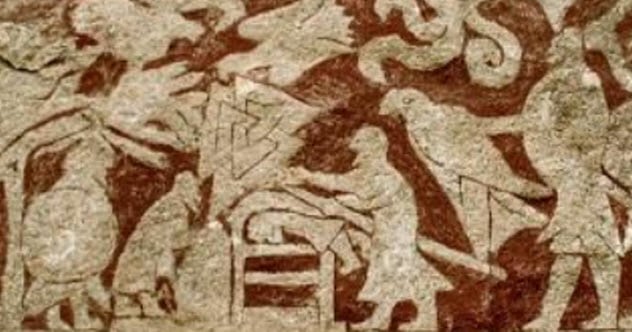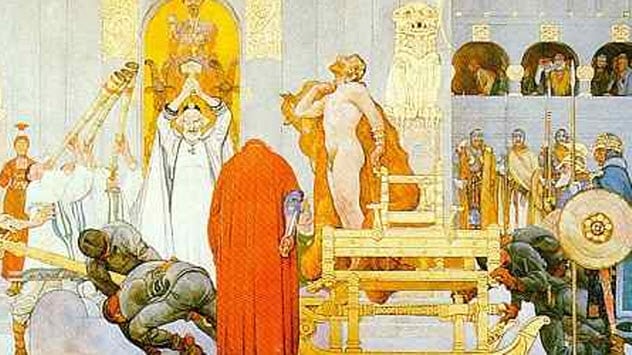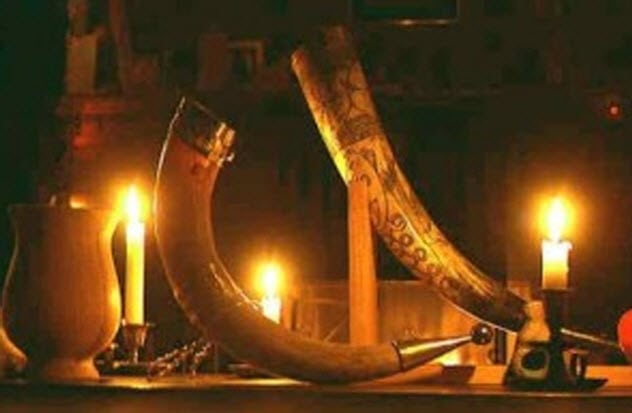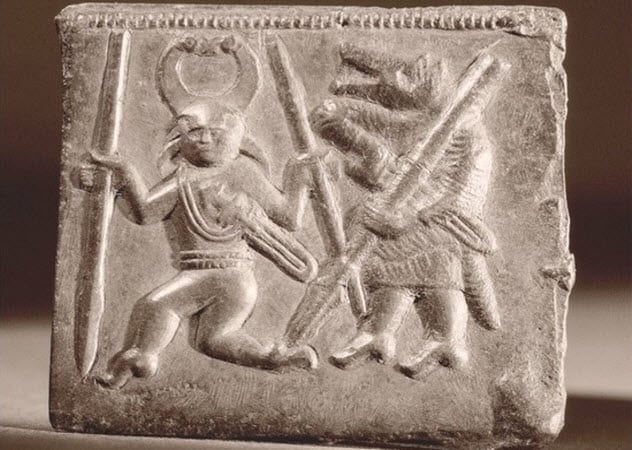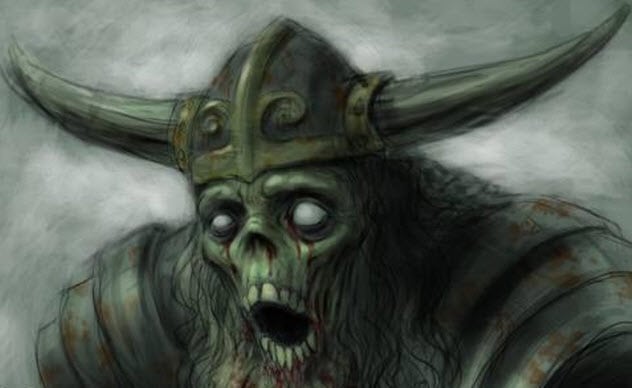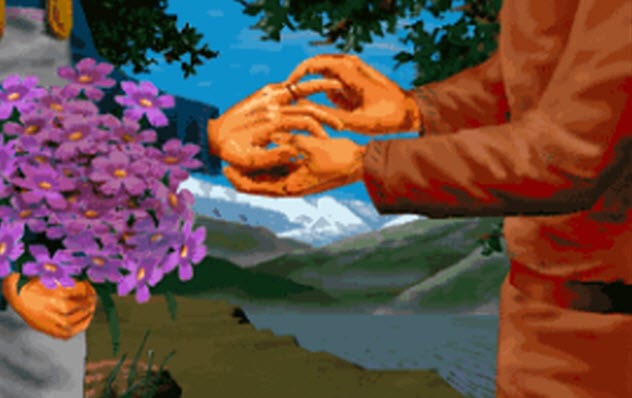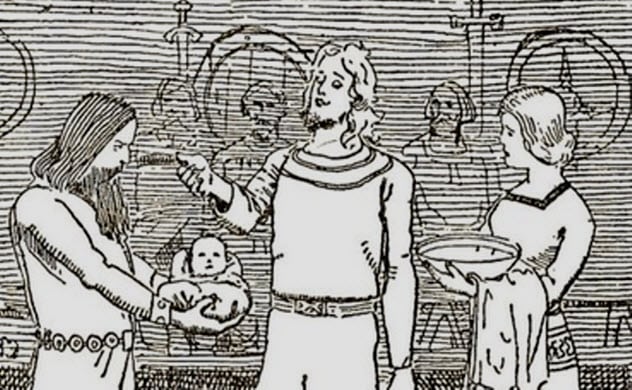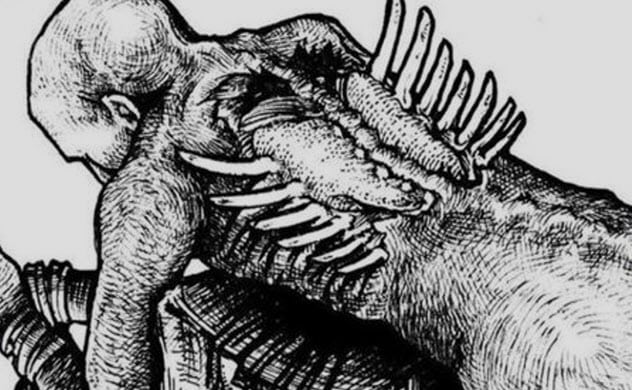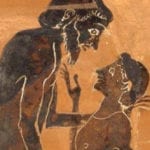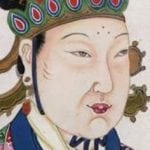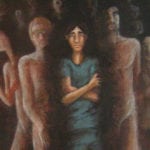Although they all had the same gods and beliefs, there were no set practices that had to be followed and people worshiped only the gods that were relevant to their lives. Vikings also worshiped their dead ancestors, communicated with spirits, practiced divination and sorcery, and had a wide variety of burial practices. This resulted in a large range of ritual practices, both within and between communities. The Vikings passed on knowledge through oral history rather than writing things down. Thus, accounts from the Viking era were either written by outsiders, who may not have fully understood what they were witnessing or being told, or written long after the Viking period had passed. Descriptions of rituals are sometimes conflicting, potentially inaccurate, or made up, either to paint Vikings in a bad light or to tell a more tantalizing story. Yet here are 10 rituals that are generally considered to have been practiced by the Vikings.
10 Blot Sacrifice
The blot was a sacrifice practiced to gain the goodwill of the gods. These rituals were carried out in large groups on the estate of the local chief who functioned as a priest during the ceremony. They were both a way for people to honor the gods and for the chiefs to show off their wealth. A blot supposedly happened at four fixed times a year, close to winter solstice, spring equinox, summer solstice, and autumn equinox. They would also have additional ones if they were having problems, like a bad harvest. In the 13th century, Snorri Sturluson wrote a detailed description of a blot performed by Sigurd Hakonsson. He said that all the local farmers gathered at the temple. There, they sacrificed many animals, mostly horses, and cooked the meat. Twigs were used to spray blood from the animals around the temple and on the participants.[1] The cooked meat and glasses of beer were blessed by the chief. While drinking the beer, they toasted to Odin and other gods. Lastly, they toasted to their dead ancestors. A different story was told by the Arab al-Tartuchi who visited Hedeby, Germany, during winter solstice. He said that people from around the area came together to feast and anyone who sacrificed an animal stuck it on stakes in front of their farm.
9 Human Sacrifice
Though not a common part of Viking life, human sacrifice was practiced at times. As stated, stories from the Viking period are not always reliable, but archaeological remains indicate that human sacrifice did happen occasionally. In the 11th century, Adam of Bremen wrote about the Vikings based on secondhand accounts. He talked about a tradition practiced at Uppsala, Sweden, every nine years at the beginning of spring. This ritual lasted nine days, with a feast and sacrifice every day. There were nine sacrifices each day for a total of 81 sacrifices. Each day, they sacrificed a male human and eight male animals. The bodies were hung from trees in a sacred grove that was next to the temple in which the ritual was carried out. This tradition was practiced to honor Odin and secure victory in the coming year. Although they normally sacrificed criminals or slaves, they once sacrificed a king at Uppsala during a time of extreme famine.[2] In Snorri Sturluson’s saga, he says that they appeased the gods by sacrificing a large number of oxen one fall in the seventh century. When that didn’t work, they sacrificed a group of men the next year. The following year, they blamed the king for the continued famine and sacrificed him, covering the altar in his blood.
8 Yule Celebrations
Yule, spelled “Jol” in Old Norse, was the name for the period between the winter solstice and the blot associated with it, which is speculated to have happened on January 12. It is uncertain exactly why Yule was celebrated, though it may have been to honor the dead, to receive good luck in the new year, to celebrate the Sun and light as the days were getting longer, or to honor Thor as he was the god who protected the world from the darkness. The exact rituals followed are also unclear, but texts refer to it as “drinking Jol.” Thus, drinking alcohol was probably a large part of the celebration. There was also a feast that lasted for three days and nights with games and singing. Vikings would make a large sun wheel (a circular symbol with a cross in the middle), set it on fire, and roll it down a hill to get the Sun to return. They made Yule logs from large pieces of oak, decorated them with yew, holly, or fir, and carved runes into them. This was their way of asking the gods for protection, and a small piece was kept until the next Yule to protect the family and start the first fire of the new year. They decorated evergreen trees with food, clothes, and carvings of runes and gods to get the tree spirits to return in spring. Young people would dress up in goat skins to represent the goats that pulled the wagon that Thor rode through the sky. Then they would go from house to house to sing and perform plays in exchange for food and drinks.[3]
7 Berserkers And Ulfhednar
Vikings are well-known for their battle fury, and there was nothing more terrifying than their berserkers and ulfhednar. Both were the result of shamanistic war rituals, but they took on different totem animals. Berserkers (“bear-shirts”) were those who became bear-men and ulfhednar (“wolf-hides”) became wolf-men. Sometimes wearing nothing but animal furs and heads, these men would go to war, using their bare hands and teeth to fight instead of weapons and shields. Others would get so worked up that they would start biting down on their own shields. According to legends, they also felt no pain and kept fighting despite being badly injured. To reach this state in battle, they first had to join the ranks of their fellow fighters. To do this, they would live in the wild like their totem animal. This would strip them of their humanity and allow them to take on their animal’s strength. There were likely many techniques used to reach the frenzied state for which they were famous on the battlefield, including exposure to extreme heat, ritual weapon dances, and fasting. This could cause a self-induced hypnotic trance, resulting in them losing their sense of pain and conscious control of their movements.[4] It has also been theorized that they used psychedelic mushrooms or a poisonous fungus to reach a state of delirium before battle. However, these have never been mentioned in sagas and several of the strains proposed would either have been too poisonous or would have resulted in apathy and depression, the opposite of a battle frenzy.
6 Tooth Modification
Vikings put great effort into their appearance with practices such as bleaching their hair with lye, combing it often, and ironing their clothes with hot rocks. However, archaeologists have fairly recently discovered that Vikings also modified their teeth. Skeletons show signs of intentional changes in the form of horizontal lines carved into the upper front teeth. The researchers believe that the grooves were filled in with dye, most likely red. This practice was not seen anywhere else in Europe at the time. This may have been a ritual conducted by warriors to incite fear in those they were about to attack or as a symbol of an achievement. However, there are no written records about this practice. As a result, further information about this ritual and any associated traditions are still unknown.[5]
5 Cremation Rituals
The Vikings had many different ways of disposing of the dead, which included cremation. The ashes could be buried in graves, under piles of rocks, or sometimes with grave goods. The ashes could also be burned with a ship, though this was reserved for high-ranking members of society as ships were expensive. A description of a Viking ship cremation was written by the Arab Ahmad Ibn Fadlan in the 10th century. He told of the treatment of a chief from the Rus Vikings. After his death, the chief’s body was left in a grave for 10 days while they made new clothes for him. A slave girl was selected to be sacrificed with him and was then kept drunk and dressed in fine clothing. On the 10th day, the chief’s ship was pulled up to land and filled with expensive furniture, drinks, food, weapons, and animals. The slave girl had to go to each tent in their settlement and have sex with the man in charge. Afterward, he told her, “Tell your lord I have done this out of love for him.”[6] When the girl was ready to get on the ship, the men who had slept with her held their hands together, forming a sort of walkway for her to walk across. The chief was already on the ship. She went into his room, where six of the men followed and had sex with her again. Afterward, they laid her down next to her master and a woman came in, giving the men a rope with which to strangle the girl. Meanwhile, the woman repeatedly stabbed the girl in the ribs. The ship was then set on fire.
4 Warding Off Draugr
Draugr (aka aptrgangr) and haugbui were the Vikings’ versions of modern-day zombies. Once a person was buried, it was believed that his corpse would be animated again. The haugbui would live innocently in its barrow, protecting its grave goods from grave robbers. However, a draugr would wander out of its barrow and harm any humans it could. To prevent this, many precautions were taken when burying a body. Pieces of straw would be placed in crosses under the shroud while a pair of open scissors was placed across the chest. The deceased’s big toes were tied together so that it couldn’t walk, and nails were pressed into the foot soles. When the coffin was carried out of the house, the bearers would stop before walking out the door to lower and raise the coffin three times in different directions, creating the shape of a cross. Sometimes, the dead person was carried out of a house through a special “corpse-door,” a hole in the wall covered in bricks. It would be torn open to remove the deceased and then put back together.[7] Vikings thought that the dead could only return the same way that they came. As a result, the deceased wouldn’t be able to enter the house. The body would also be carried out feet first so that it couldn’t properly see which route they took to the burial mound. When the coffin was out of the house, all the jars, saucepans, and any chairs and stools previously used by the deceased were turned upside down. If the dead were buried in a churchyard, the parson was meant to bind the dead to their graves with magic words.
3 Wedding Ceremonies
Before a wedding, the bride would remove her kransen, a gilt circlet worn by unwed women with their hair loose. She would likely replace this with a wedding crown, and her kransen would be saved for her future daughter. The groom would have to acquire a sword from one of his ancestors. It is uncertain whether this was done by breaking into the grave of a dead ancestor and taking the sword, breaking into a fake grave prepared for this occasion, or asking a living relative for his sword. During the ceremony, the groom would carry his sword and possibly a hammer or axe to symbolize Thor. Neither the bride nor groom wore special wedding clothes. The wedding would be held on a Friday as it was Frigg’s day. (Frigg was a goddess of fertility.) The ceremony would start by getting the gods’ attention, possibly by sacrificing or dedicating an animal to one of the gods. During the ceremony, the groom would give the sword from his ancestor to the bride so that she could keep it for their future son. In turn, she would give the groom a sword. They would then exchange rings and vows.[8] After the ceremony, they would head to a hall to feast. Here, the groom would help his bride over the threshold before he plunged his sword into a pillar. The deeper it went in, the more luck and children they would have. The couple had to share some bridal ale (usually mead) that night and for the next month. At the end of the feast, the couple would be accompanied to bed so that witnesses could testify that their union had been consummated. The next morning, the bride’s hair would be tied up and covered with a cloth to show her status as a wife. The groom would then give her the keys to his house.
2 Infant Rituals
When a baby was born, a couple of rituals were needed for the infant to be considered a real person. Before this, the baby was not considered a human yet, probably as a way for people to protect themselves emotionally as infant mortality was so high. When the baby was born, he was placed on the ground until the father picked up the child and placed him inside the father’s coat. This symbolized that the father accepted that the baby was his child. He would then inspect the child. If the baby had any problems, he would be left exposed to die. If he was healthy, they would perform a ceremony called ausa vatni in which they sprinkled water over the baby. At this point, the child would be named in a ceremony called nafnfesti. For this, the father would state the child’s name and give him a gift. The gifts usually consisted of things such as a ring, weapon, or a farm or land deed. After this, the child could no longer be subject to exposure as it would then be considered murder.[9]
1 The Blood Eagle
Popularized by the TV show Vikings, this gory method of execution was possibly committed in real life, too. The blood eagle consisted of the victim being placed facedown and restrained. An eagle was carved into his back, and then the ribs were severed from the spine with an axe. The ribs and the skin around them were pulled outward to represent the wings of the eagle. Next, salt was rubbed into the wound. (The victim was still alive at this point.) Then the lungs were pulled out of the body and stretched across the ribs. As the victim died, the lungs were fluttering in the wind, reminiscent of a bird’s wings. This is purportedly the method used to kill King Aella of Northumbria in AD 867.[10]
